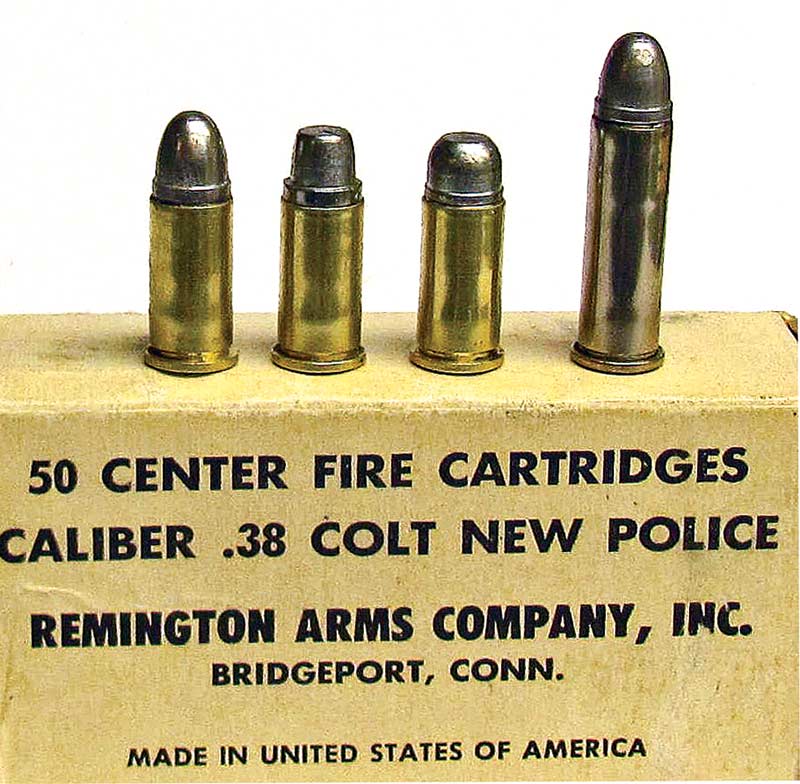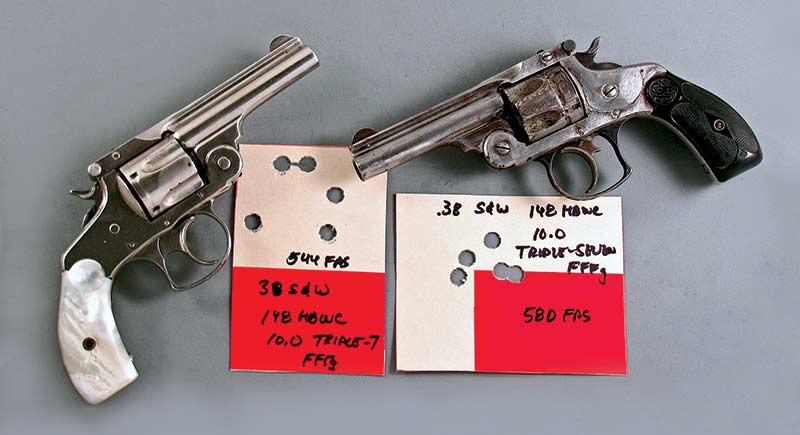Reloading The .389 S&W/.38 Colt New Police
When I mention “.38 cartridge” what’s the first thing coming to mind? For most shooters .38 means .38 Special, or maybe .38 Super or .38 Long Colt. But there’s another .38, a contemporary of the .38 Long Colt. In 1877, Colt brought forth their first DA sixgun, the Lightning, chambered in .38 Long Colt. That same year, Smith & Wesson introduced the .38 Smith & Wesson cartridge chambered in their spur trigger revolvers, and then in the early 1880’s it was chambered in their line of Top-Breaks. Smith & Wesson would produce approximately 800,000 Top-Breaks in their .38 cartridge and these pocket pistols were exceptionally popular for several decades on both sides of 1900. With the coming of swing-out cylinder revolvers, both S&W and Colt would chamber the .38 S&W, however Colt labeled “their” cartridge the .38 Colt New Police. Most .38 S&W cartridges featured round nosed bullets while Colt flat-nosed their version.
Recently while almost everyone else has been looking at black plastic guns I’ve been able to find some real bargains chambered in .38 S&W. One weekend I hit three of our main gun shops and came away from Buckhorn with a 4″ S&W Regulation Police, from Boise Gun with a Smith & Wesson 5″ British Service Model, and at Cabela’s I found a .38 S&W Terrier. Just prior to this I came up with two .38 S&W sixguns, a 4″ Colt Police Positive and a 2″ Colt Bankers Special. I have less, much less money invested in these five historical sixguns than many have spent on just one black rifle.
Loading Fun
I ordered a set of Lee carbide reloading dies for the .38 S&W and found them to be quite similar to other dies I had as the sizing die is marked “.38 Auto”; so this older .38 S&W uses the same sizing die as the .38 Super. One of these .38 S&W-chambered sixguns came with three boxes of ammunition and I was even able to find 500 rounds of new Starline brass. The factory loads feature a 145-146-gr. lead bullet at a muzzle velocity of 600-650 fps from a 4″ barrel. I duplicate these velocities using the Lyman #358311 round-nosed bullet with 2.5 grains of HP38, or for even easier shooting loads at about 100 fps less, I go with the same charge of Hodgdon’s Trail Boss. This powder is easy to load, as the appropriate charge is to fill a case to the base of the bullet without compression. It’s a natural for older sixguns such as these five.
For the .38 S&W Top-Breaks I stick with black powder or a black powder equivalent. Diamond Dot has quite a collection of older Top-Breaks and I regularly shoot four of theirs. Two of these are in virtually new condition complete with pearl grips. The best shooting one, though, is a well-worn example and it appears to have been used extensively. I load swaged lead hollow base wadcutters over 10 grains of Hodgdon’s Triple-Seven FFFg grade. With this old S&W from the 1880’s, muzzle velocity is right at 600 fps and at seven yards will put all five shots into 1″.
Keep It Modest
In addition to HP38 I also use Unique extensively in loading for the more modern .38 S&W sixguns. In doing a little research I found loads in reputable manuals as high as 4.0 grains of Unique. Since this is pretty much a standard load for .38 Specials I don’t want to go this high, and instead my top load is 3.0 grains. Even this is hotter than I want to use on a regular basis in these older sixguns so I have pretty much dropped back to 2.5 grains as my normal load.
Factory loads using bullets in the 150-gr. range are kept necessarily mild because of so many older sixguns still in use, and will chronograph from 550-600 fps. In a 4″ barrel my cast bullet loads using Lyman’s #358 311RN and #358477 SWC as well as the Oregon Trail 158SWC loaded over 3.0 grains of Unique generally give muzzle velocities well over 800 fps. But dropping back to 2.5 grains is a more reasonable — for these older sixguns — 650 fps. Although the .38 S&W really uses 0.360″ bullets, standard 0.358″ diameter bullets work just fine.
My .38 S&W sixguns have provided a lot of pleasure over the past few months. On the upside, with many of the loads used, some are still viable for self-defense. For those who may have solid-frame revolvers chambered for the .38 S&W, Buffalo Bore is now offering serious .38 S&W loading using a 125 Hard Cast bullet clocking out at an honest 900 fps.






